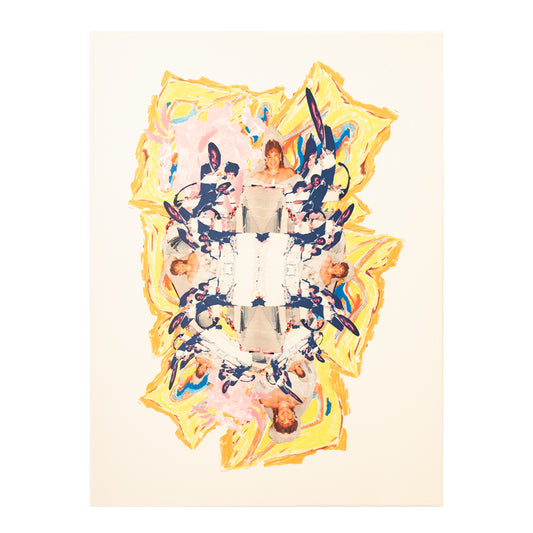Lemkus Gallery presents Tapestry Pageant by Queezy Babaz, featuring works produced in the Residency28 studio. Queezy embodies the true spirit of an interdisciplinary artist, one that has pushed the boundaries of numerous creative spaces over the past decade. Since the programme began, Queezy has devoted themself to solidifying their visual language. In this process, they have drawn from a broad pool of references and research interests pertaining to their position and lived experience as a queer and coloured person.
Taking the idea of a tapestry as a long-held tradition of textile work rooted in multiple cultures and societies, and the pageant as an elaborate celebration of bodies with a history of subversion in South Africa as starting points, Queezy combines these aesthetics to produce a delicate weave of personal experiences and collective memories. Importantly, the works pay tribute to the legacy of queer figures such as Kewpie; their style, composure, and refusal to conform. Through kaleidoscopic entanglements of family photographs and fragments of archives (Spring Queen, Miss Gay Western Cape), Queezy’s works fashion a way of engaging the past while looking towards the future.
The resulting body of work boasts a diverse assortment of mixed-media collages printed on satin— a material with great symbolic currency. Queezy’s use of satin as canvas throws shade on the muteness of conventional mediums. In contrast, the textural quality of satin, soft and lustrous, conveys sentiments of ethereality, delicateness, and poise. Satin is also a historical reference, a deep thread of coloured heritage with ties to the early colonial economy, slavery and indentured labour, the motley garb of the Cape Minstrels, and generations of factory work. At the same time, satin is a marker of ceremony and celebration (weddings, ballrooms, pageants), which imbues the fabric with a semblance of specialness.
The work also functions as an extension of drag— a way of performing the self. For Queezy, this has involved conjuring and collaging different aspects of their identity and heritage: indigenous (Khoi and San) cosmologies, queer rites of passage, contrasting cultural styles and belief systems, and spirituality. This complex amalgamation of ideas and stylistic codes is visible in the work, inviting both awe and confrontation. Presenting facets of past and present simultaneously, Queezy complicates the ‘when’ and ‘where’ of the drag performance/fine art intersection and develops a language to explore these relations in the future.
Images from the Sequins, Self and Struggle digital archive: http://sequins-self-and-struggle.com/about/ A Centre for Curating the Archive project by Professor Siona O’Connell.
 Sold out
Sold out Sold out
Sold out













